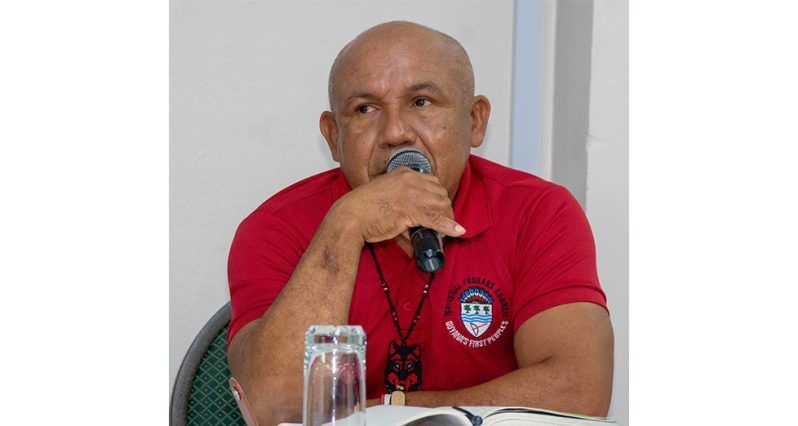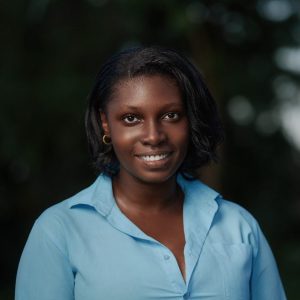How community-led forest protection and the Low Carbon Development Strategy are helping shape the nation’s sustainability efforts and global recognition
IN recent years, Guyana has reached major milestones in environmental sustainability, becoming a leader in conservation and climate action. The government, working closely with the nation’s Indigenous peoples, has rolled out numerous projects and initiatives that support both Guyana’s natural diversity and its people. Among the most impactful of these has been the Low Carbon Development Strategy (LCDS).
While large-scale projects like these ensure sustainability on the national stage, backed by international collaboration and scientific guidance, Chairman of the National Toshaos Council, Derrick John, reminds the world that the nation’s success is deeply rooted in shared stewardship between Indigenous communities and government leaders. Speaking at a forum held in preparation for the highly anticipated 30th United Nations Conference of Parties (COP30), John highlighted years of community-led forest protection and equitable development, urging continued unity and bold action ahead of COP30.
Indigenous Communities at the Forefront
The relationship between Guyanese leaders and Indigenous peoples has been impactful and, according to John, stems from a long-standing partnership. While the relationship existed for years, John stated that it was in 2008 when the voices of Indigenous people were formally recognised in the landscape of natural conservation and sustainability. This eventually paved the way for the 2009 Guyana–Norway Agreement on Climate and Forest Partnership.
“Indigenous people have always recognised the importance of nature. It’s part of our life. For centuries, our ancestors have done an outstanding job in preserving our forests,” he said. “In 2009, when Guyana signed the first bilateral agreement with Norway, Indigenous people received their first financial support from the government. We were asked to develop what we called a community development plan, and we were given five million Guyana dollars for that project.”
Since then, heads of state, various ministries, and both private and public entities have joined the conservation and sustainability efforts, and John says Indigenous people have always been among the loudest voices in that fight. “Guyana has always lobbied for the world to recognise the importance of our forests on the global stage. With the leadership that our country has always had, we were taken seriously. But all of this work can only happen by recognising the role of every stakeholder in Guyana.”
Highlighting the importance of the Indigenous voice, John added, “Indigenous people have always been in that conversation. I must make it very clear that we were always given a seat at the table. We are members of the multi-stakeholder committee.”
The voice of the nation’s Indigenous people, though seemingly small, has played a major role in the success of countless sustainability initiatives in Guyana. As John described it, their traditional knowledge has been integrated into the national strategy. Because of this, John says, the rest of the world is recognising the role of Indigenous people—not only in conservation but also in national strategy and policymaking.
“Many times, when I travel, people ask why Guyana is being recognised. I always say it’s a very simple method: it’s because everyone in Guyana respects each other. Government respects Indigenous people; Indigenous people respect other stakeholders. We live by our motto: One People, One Nation, One Destiny. That’s something very unique across the world. I’ve listened to sad stories from other Indigenous groups globally, and it’s heartbreaking to hear that their voices are not recognised at the national level. It’s very different in Guyana.”
The LCDS and Equitable Development
Presently, various Indigenous communities are benefitting from carbon financing, with money distributed equitably among the 242 communities, according to John. Under the LCDS, now in its 2030 phase, Guyana receives carbon credit payments for keeping its forests intact, and a significant share of that revenue is directed to Indigenous communities.
Even the distribution of funds among communities was strategic, John says, with various steps ensuring the best allocation across Guyana, whether titled or untitled, taking into account factors such as population, landmass, and location. “We looked at a model most suitable for Indigenous people. Some communities have very small populations but huge land masses, so the focus was people-centred,” he explained. “There are also communities that do not yet have rights to their lands. We had to take that into consideration; they still need to benefit. Some communities have forests, and some do not, but it’s a really good model. I’m proud to say that over the years, Guyana has developed a model where all Indigenous communities benefit, whether you have titled lands or forests.”
While the project continues to grow, garner international attention, and become a model of sustainability, John says the LCDS has already had a massive positive impact on the lives of thousands of Guyanese. “From the funds being distributed, we have seen massive transformation taking place. Lives are being improved, there are more job opportunities for local people, especially women and young people. Communities are investing their funds and doing more to protect the forests.”
One of the sectors seeing significant investment and growth has been eco-tourism, with communities highlighting Guyana’s natural beauty while keeping conservation at the forefront. “One of the big investments has been introducing eco-tourism, which is very important for us. We don’t have beautiful beaches like the Caribbean, but what we do have is nature, and it plays an important role in keeping our environment stable, maintaining temperature, and sustaining the global atmosphere so that we can all survive as human beings. Without our forests, it would be a catastrophe. The forest is like the lung of the earth, and people want to come to experience life with nature.”
Development has not stopped at eco-tourism. Across the hinterland, communities are building eco-lodges, promoting eco-tours, and revitalising traditional practices. “Communities have developed eco-lodges and other activities that promote eco-tourism. They have also invested in food security to become self-sufficient at the community level, introducing poultry rearing and expanding farming. Some are using the funds to revive their languages and traditional knowledge, which have been in gradual decline. There’s a vast amount of change happening across different sectors in our communities,” he said.
Pointing to examples of exceptional leadership within communities, John added, “This is very important for us. We’ve seen communities recognising the need to do more, and I must commend the communities in Region Nine Deep South, who have pledged some of their resources to protect biodiversity. That’s a big step, a worthwhile investment I hope other communities will follow.”
To COP30 and Beyond
As the world prepares for COP30 in Brazil next year, John said Guyana must carry forward its message of partnership and respect. “We always recognise nature-based solutions as very important, but at the same time we must be able to access funding that is critical for Indigenous people. Guyana has to be proud. We, as a people, have to be proud.”
He further emphasised, “As we head to COP30, I want us to keep the momentum. Let us go to COP30 with one voice so that we can influence the big countries. We hope to move from promises to actions, that’s very critical. We have not been seeing the results from all these past COPs. There have been many promises, but we need to move forward and start implementing.”
Photo Caption:



.jpg)










